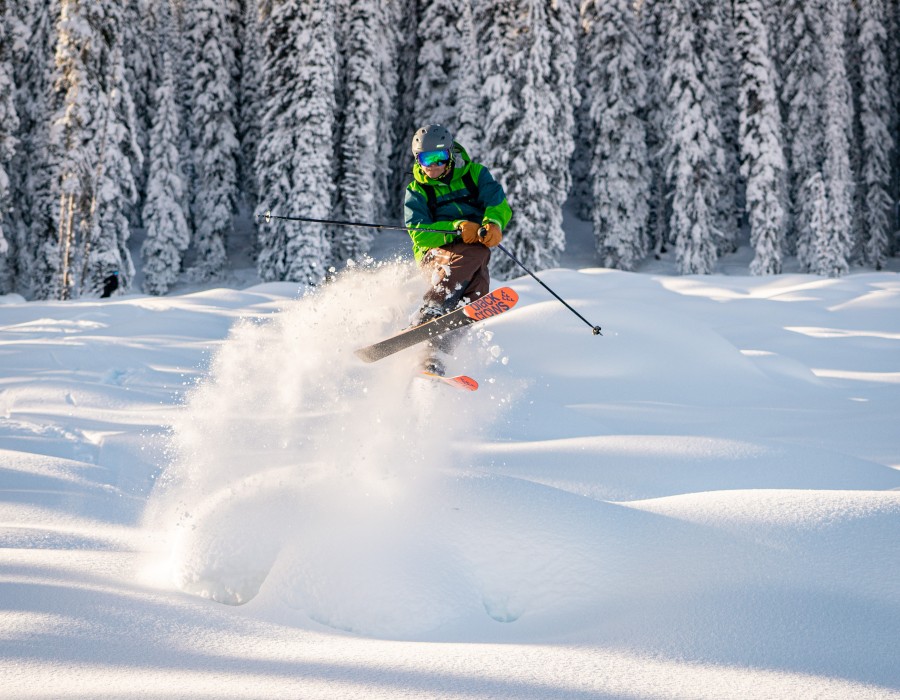Tree skiing is an exciting and adventurous way to experience the slopes, offering a blend of natural beauty and thrilling challenges. Unlike traditional open-slope skiing, tree skiing involves navigating through forests, weaving between trees, and making quick, precise turns to avoid obstacles. If you're a skier looking to elevate your skiing game and add a touch of adventure, tree skiing might be your next big challenge.
What is Tree Skiing?
Tree skiing, also known as glade skiing, takes place in wooded areas of a ski resort or off-piste, away from the groomed runs. Skiers glide through forests, maneuvering around trees, bushes, and natural terrain features like rocks or logs. It's a unique way to connect with nature while enjoying the rush of downhill skiing.
Why Tree Skiing is So Exciting
Tree skiing offers a more immersive experience compared to traditional skiing. The proximity to nature, the quiet of the forest, and the need for quick reflexes make it feel like a completely different sport. The sense of adventure, as you carve your way down through the trees, creates an adrenaline rush that keeps many skiers coming back for more.
- Challenge and Skill Development: Tree skiing forces you to be more aware of your surroundings and react quickly to obstacles. This helps sharpen your skiing skills, especially in terms of balance, control, and agility.
- Escape from Crowds: Many ski resorts have dedicated tree skiing zones that are less crowded than the main slopes. This means you can enjoy more peaceful runs, surrounded by nature.
- Fresh Powder: Since fewer people venture into the trees, the snow tends to stay untouched for longer. Tree skiing often offers better conditions for powder skiing, giving you the chance to carve through deep, soft snow.
Tips for Safe Tree Skiing
While tree skiing is fun, it also comes with risks. Trees don’t move, so it's important to stay focused and know how to handle yourself in tight spaces. Here are some tips to help you enjoy tree skiing safely:
- Start Slow: If you're new to tree skiing, start with easier, well-spaced glades. These areas have trees that are spread out enough to give you time to make turns without feeling too crowded.
- Stay in Control: Unlike open slopes, tree skiing requires constant adjustments. Keep your speed under control so you can react quickly to avoid trees and other obstacles.
- Look for Clear Paths: Instead of focusing on the trees, look for the open spaces between them. Your skis will naturally follow your line of sight, so keep your eyes on the path you want to take.
- Use Short Turns: In tree skiing, quick, short turns are essential. Practice making tight turns on regular slopes before hitting the trees, so you feel confident weaving through the forest.
- Wear Protective Gear: Since you're skiing in close quarters with trees, wearing a helmet is a must. Some skiers also opt for extra protection, like padding or body armor, to stay safe.
Best Locations for Tree Skiing
If you're ready to try tree skiing, there are many resorts around the world known for their glade runs. Some of the best tree skiing destinations include:
- Jay Peak, Vermont: Jay Peak is famous for its extensive glade skiing areas, offering runs for both beginners and experts. Its natural snowfall and beautiful forests make it a favorite among tree skiers.
- Revelstoke, British Columbia: For more advanced skiers, Revelstoke offers challenging tree skiing with steep terrain and tight trees. The deep powder here makes it a dream for those looking for a thrill.
- Steamboat, Colorado: Known for its "Champagne Powder," Steamboat's tree skiing is legendary. The resort features gentle, widely spaced trees in many areas, making it perfect for intermediate skiers.
- Niseko, Japan: For a different kind of tree skiing experience, Niseko offers stunning birch tree glades and some of the deepest powder you'll ever find. The wide trees and unique scenery create an unforgettable skiing adventure.
Is Tree Skiing for Everyone?
Tree skiing is best suited for intermediate to advanced skiers who are confident in their ability to make quick turns and control their speed. It requires a higher level of technical skill compared to skiing on open runs. However, many resorts offer beginner-friendly glade areas where you can practice and build confidence before tackling more challenging terrain.
Conclusion: Embrace the Adventure of Tree Skiing
Tree skiing offers a unique way to experience the slopes, providing a mix of adventure, skill development, and natural beauty. Whether you're seeking the thrill of weaving through trees or simply looking for fresh powder and fewer crowds, tree skiing has something to offer every adventurous skier. So, next time you’re at the resort, venture off the groomed trails and discover the excitement of tree skiing.





Comments